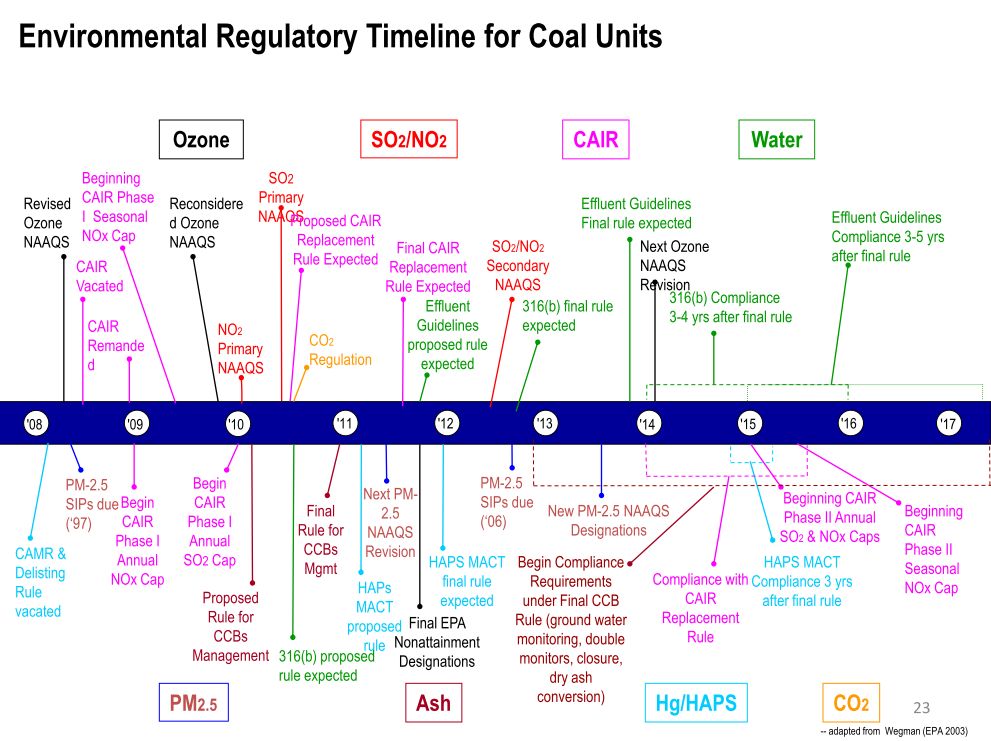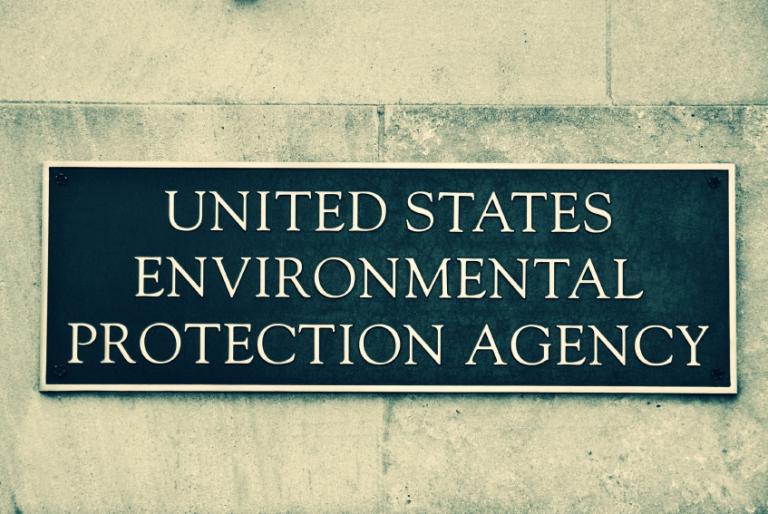 Big Coal rings the alarm bells.Photo: Alan LevineGiven the impending regulatory changes we’ve been discussing, how is the power sector reacting? For the most part, predictably.
Big Coal rings the alarm bells.Photo: Alan LevineGiven the impending regulatory changes we’ve been discussing, how is the power sector reacting? For the most part, predictably.
For more than 30 years now, the utility industry has dealt with environmental regulations in one way: It’s fought them. Utilities have sued at every opportunity, spent millions of dollars buying off legislators, staffed federal agencies with flacks, and funded enormous propaganda campaigns to mislead the American people. That’s what they know; it’s a war they’ve been waging for generations. (Though, as I noted, the perverse incentives established by grandfathering under the Clean Air Act share some of the blame.)
Now they face an EPA that is taking its responsibilities seriously. Given the backlog, much of the regulatory work that should have been spread out over 10 or 20 years is going to happen in a relatively short time span. This has the industry, which is unaccustomed to change or innovation (to say the least), in a bit of a panic. So it’s doing what it’s always done: forecasting doom, filling legislators’ heads with scare stories, and planning lawsuits.
To get a sense of the line the industry is taking, check out this presentation from the Edison Electric Institute to the Congressional Coal Caucus [PDF]. (EEI is a utility industry trade group.) It is built around this purposefully complex and confusing image:
 Edison Electric Institute: “Economic Impacts of Coal“
Edison Electric Institute: “Economic Impacts of Coal“
Oh noes! Look at all the arrows!
EEI has two basic messages to (primarily coal-based) legislators. Here’s the first:
Without proper coordination of EPA regulatory initiatives on air quality, water and coal ash, there is a real danger that the implementation of these rules will result in untenable risks to both the economics and reliability of the electricity generation system, including the near-term retirement or conversion to natural gas of a substantial portion of the coal-fired generation fleet. [Emphasis mine.]
(Note how the fate of the coal-fired fleet is subtly equated with the fate of the electricity generation system generally.)
The industry’s prediction — which is backed up by some independent analyses — is that new regulations will force it to shut down a substantial portion of its old coal fleet. Since the economics of nuclear remain unfavorable, there’s only one source that can compensate for the loss: natural gas. Thus there will be a “dash to gas,” natural gas prices will rise, and industries that depend on natural gas will be screwed. Also, electricity prices will rise, leaving grandma to shiver in the dark. Also, there will be blackouts. And possibly famine and locusts (I haven’t read all the footnotes).
This is one reason some utilities were willing to play ball on the climate bill: The money they got from free permits and other subsidies under the bill would have allowed them to develop CCS fast enough that it, rather than gas, could replace old coal. There was no greater champion of the bill than Duke Energy CEO Jim Rogers, himself the proprietor of a large coal fleet. This is from Energy Daily in July (emphasis added):
… Rogers told [Senate Majority Leader Harry] Reid (D-Nev.) … that omitting carbon regulation likely would lead to the very “dash to gas” by utilities that worries industrials.
“I think our friends in the industrial sector have little recognition of the challenges the power sector faces whether we address greenhouse gas emissions or not,” Rogers said.
“Today more than 70 percent of the U.S. coal fleet is over 30 years old and 33 percent of the fleet is more than 40 years old. As [EPA] implements new regulations for smog, soot mercury, etc., over the new few years, we expect that these regulations (combined with the age of the fleet) will force as much as one-third of U.S. coal plants to close. Without resolution of the carbon risk, we will not be able to replace this existing capacity with new coal plants. And without a carbon price, it is very difficult to justify nuclear power.
“Without resolution of the carbon issue for our sector, our ‘business as usual’ future will include no nuclear plants and no new coal plants — this makes the ‘dash to gas’ the industrials so fear much more likely.”
This is a pretty extraordinary statement from a utility executive who makes his business on coal and nuclear: If coal is forced to be clean, it will be rendered uneconomic. And nuclear is already uneconomic! That leaves natural gas (and wind, efficiency, combined heat and power, solar, etc., though of course Rogers omits them) to fill the gap.
Which leads to the second message the industry is taking to Congress:
Under any scenario, these [pollution] reductions will be expensive, but the wisest, most economic, way to accomplish them in the power sector is through the development and deployment of the full portfolio of climate technologies and measures over the long term. A key component of this full portfolio is advanced coal technologies integrated with carbon capture and storage (CCS).
Again, technology is the key to meeting environmental goals. … Additional work needs to be done to address gaps in the legal and regulatory structure for deploying CCS, but steps are being taken to ensure that CCS is ready to be deployed to help reduce emissions from coal-fired generation as early as the 2020-2025 time frame.
This has long been the utility line on carbon resturcitons. They say they need technology to reduce emissions; they’re working valiantly on it, but it’s not ready yet; if Congress will just continue to give them tons of money and ease their regulatory burden, they’ll develop it in 10 years or so. In the meantime they’d like to be left alone.
To summarize, the message from coal utilities to Congress is: don’t regulate us, subsidize us!
It’s never quite stated explicitly, but note that the ongoing use of coal is taken as an end in itself. If it could be demonstrated that old coal (and even new coal!) could be phased out without undue impact on economic health or electric reliability, coal utilities would still oppose it. They love coal; legislators in coal states love coal; every legislator in the country save a few in California is terrified of coal’s political clout. Big Coal has been quite successful in putting the cart before the horse, it has equated its fate with the fate of the electricity system and the economy.
Should we believe coal utilities? Or is it possible for these regulations be phased in while homeowners, industries, and the electricity system are kept whole? I’l
l take a look at that in the next post.



